Forestry Management
Managing Our Forests for the Benefit of All Americans
Action Floors takes great pride in our commitment to sustainable forestry practices. Our families and many of our employees’ families have been involved in the forest products industry for two or three generations. Because our livelihoods depend on sustaining our forests, we our very concerned about recent trends that limit responsible timber harvesting and interfere with the professional, proven forestry practices that are needed to maintain the healthy, sustainable forests we all desire.
We invite you to learn more about these issues and to encourage your elected officials to improve our nation’s forest management practices so that our forest products industry and our forests can continue to serve our future generations.
Below are Our Thoughts about Taking Action…
No. 1 – It’s time to improve America’s management of our forests.
No. 2 – Managing forests requires balancing the needs of all who benefit from them.
No. 3 – How can we sustain a vital forest products industry?
Help Support the Cause Through Letters to Elected Officials
Below are some sample letters you can use to contact your elected officials and your local news media. Feel free to review the main points, add your own thoughts and edit to create a customized letter from you. Also, below is a link to do’s and don’ts for writing to government officials.
How to Write Effective Letters to Congress
Dear President
Dear U.S. Senator
Dear U.S. Representative
Dear Editor
We Encourage You to Learn More About Responsible Timber Harvesting and Sustainable Forest Management
National Hardwood Lumber Association (NHLA). http://www.nhla.com/
Sustainable Forestry Initiative http://www.sfiprogram.org/
Forest Stewardship Council www.us.fsc.org
U.S. Forest Service http://www.fs.fed.us/
U.S. Forest Service News http://www.fs.fed.us/news/2014/releases/04/budget.shtml
Hardwood Forest Foundation http://www.hardwoodforest.org/truth-about-trees
Healthy Forest, Health Communities http://www.healthyforests.org
Did you know?
Mature trees take in less carbon dioxide.
Mature hardwood trees take in less carbon dioxide than newer growth. If these trees are left to die, fall over and rot, or burn in a forest fire, they actually release the carbon they have retained back into the atmosphere.
Selectively harvesting hardwood trees before they’re too mature and converting that wood into finished products, where the carbon is retained forever, is a win/win for the logging and wood products industry as well as for those who are concerned about the percentage of carbon in our air.
Harvesting mature trees makes way for new growth that absorbs greater amounts of CO2 and releases on average a pound of oxygen for every pound of wood grown.*
Total forest growth in the U.S. has exceeded the amount harvested every year since the 1940’s.*
The annual hardwood growth rate in the U.S. surpasses our harvest by 70 percent.* Each year 1.7 billion trees are planted in the United States – more than five trees for every man, woman and child in America – an average of 4.8 million seedlings each
day.*
Scientists estimate lumber manufacturing consumes just 4% of the energy used by all raw materials manufacturers. Steel and concrete manufacturers consume 56%. A steel stud requires 21 times as much energy to produce and releases 15 times the sulfur dioxide as a wood 2×4. Producing concrete emits up to 3 times more carbon dioxide, carbon monoxide and hydrocarbon than lumber production.*
*These facts are provided by the Hardwood Forest Foundation, a 501-C3 organization, founded in 1989 and involved in a variety of educational programs and activities throughout the United States and Canada, with the support of its parent organization, National Hardwood Lumber Association (NHLA).
FSC works to increase responsibly managed forests.
Leaders in the forest industry as well as conservation organizations have developed forest certification programs with criteria for sound forest management. Independent audit processes conducted in the field trace products from a certified forest through manufacturing and distribution all the way to the consumer to ensure the consumer that the wood or paper products they are purchasing did indeed come from a sustainably managed forest.
The US Forest Service estimates 12 million acres of forest in the Southeast will be lost to suburban real estate development between 1992 – 2020.*
The Forest Stewardship Council® (FSC®) is a global, not-for-profit organization dedicated to the promotion of responsible forest management worldwide. FSC defines standards based on agreed principles for responsible forest stewardship that are supported by environmental, social, and economic stakeholders.
The Forest Stewardship Council was formed to help create demand for products from responsibly managed forests. Today, more than 40,000 American family forest owners are FSC certified. When you purchase products with the FSC logo, you are saying to the landowner, “thank you for taking care of your forest.” *
The Forest Stewardship Council mission is to promote environmentally sound, socially beneficial and economically prosperous management of the world’s forests.*
SFI, Inc. is an independent, nonprofit organization that is solely responsible for maintaining, overseeing and improving the internationally recognized Sustainable Forestry Initiative® (SFI®) program. SFI Inc. is governed by a three-chamber board of directors representing environmental, social and economic sectors equally.**
SFI promotes sustainable forestry management, improved forestry practices and responsible purchasing of forest products. By following the SFI forest certification standard, forest landowners, forest managers, forest products producers and other program participants practice responsible forestry on the lands they manage, and influence millions of additional acres in North America and globally through unique fiber sourcing requirements.**
The forest products industry in the Great Lakes region has utilized hard maple for over 100 years, and there are more timber stands today than any other time in our long history.
Long before groups such as the Forest Stewardship Council, SFI, and many others were formed, generations before us practiced proper forest management and respected our renewable natural resources.
* www.us.fsc.org Forest Stewardship Council website
** www.sfiprogram.org Sustainable Forestry Initiative website
Timber harvesting impacts government funding.
Vital funding for local schools and county governments suffers when timber harvesting revenues decline. Reforestation and Timber Sale Improvement Reports were completed annually by the U.S. Forest Service until 2004. Reports for 2005-2012 are “being prepared,” according to the U.S. Forest Service website (see Forest Management)
According to the American Forest and Paper Association (AF&PA), the U.S. forest products industry employs about one million workers and accounts for approximately six percent of the total U.S. manufacturing GDP, placing it roughly on par with the automotive and plastics industry. The forest products industry is among the top ten manufacturing sector employers in 48 states and generates over $200 billion a year in sales and about $54 billion in annual payroll. In 2011, it recovered 66.8% of paper consumed and is the leading generator and user of renewable energy.
Countries with large steady quantities of industrial wood use are more likely to maintain their forest base. Forest products research promotes responsible use of wood. Forest managers and land owners can recover management costs from revenues generated by selling wood. This will incentivize forest land owners to maintain their forest base and prevent them from converting forest land to other use. New products and technology from forest products research will also create jobs, especially in rural communities and stimulate economic growth. Source: U.S. Forest Service





















